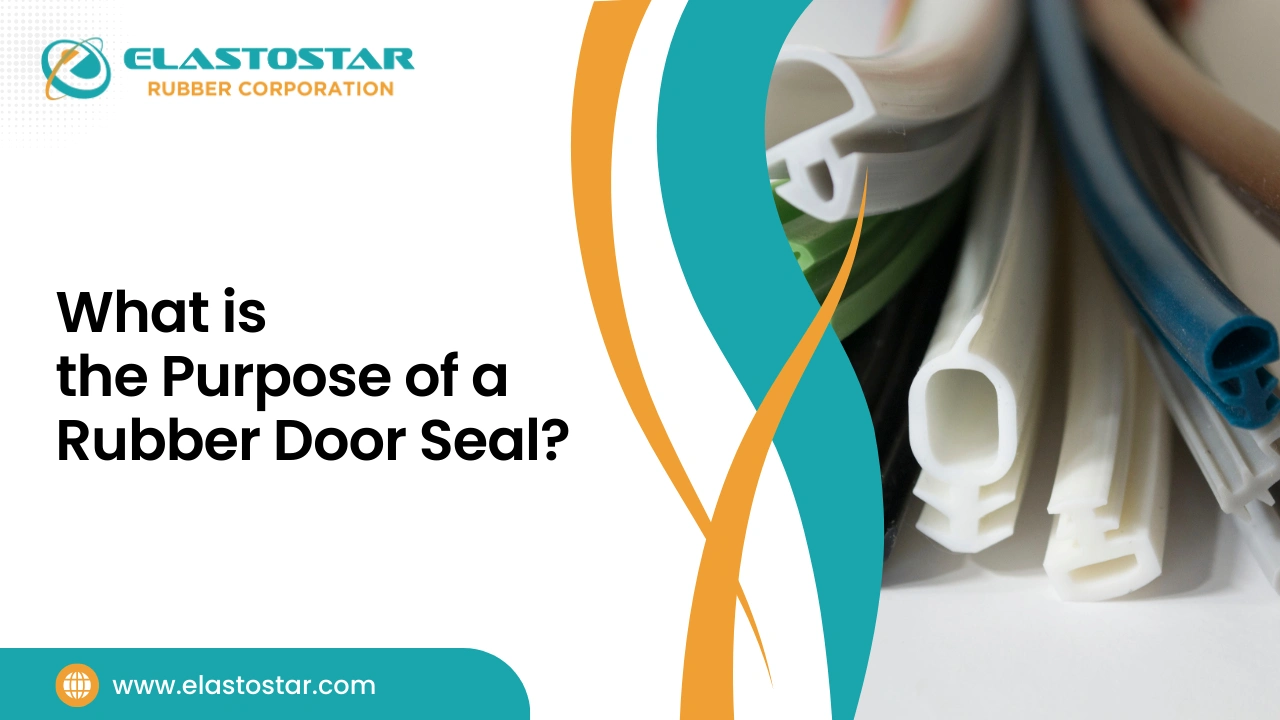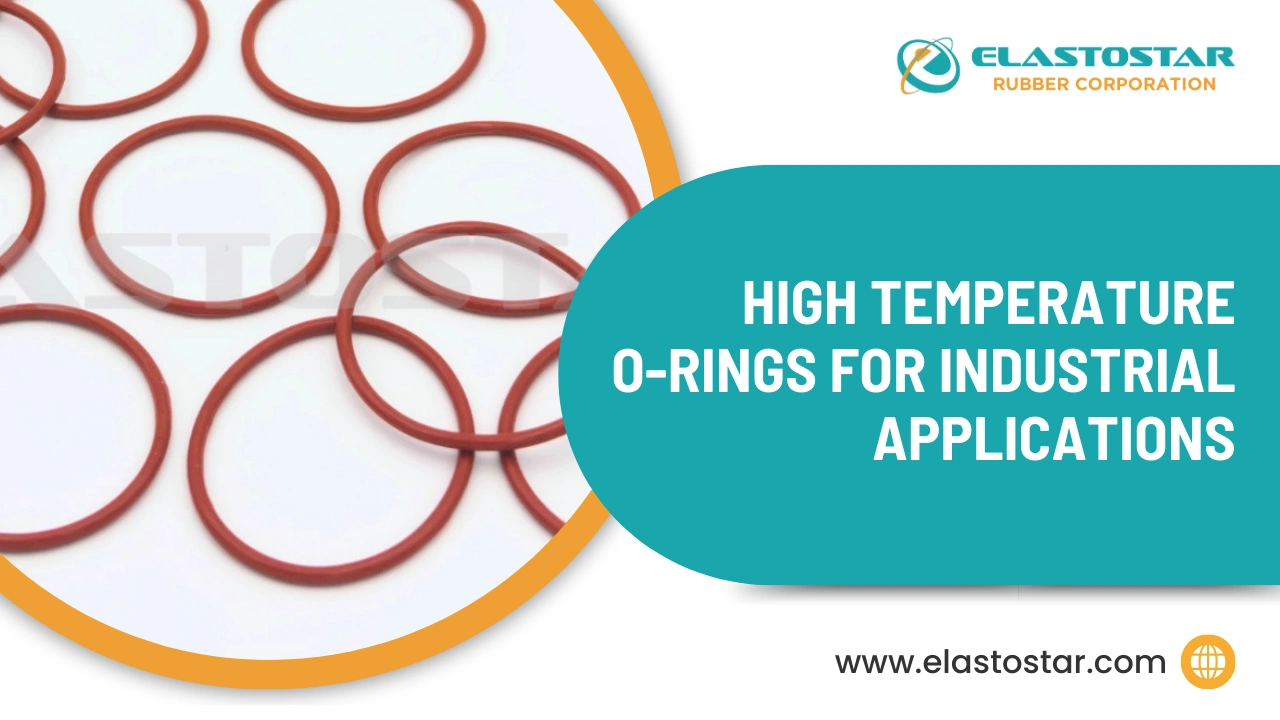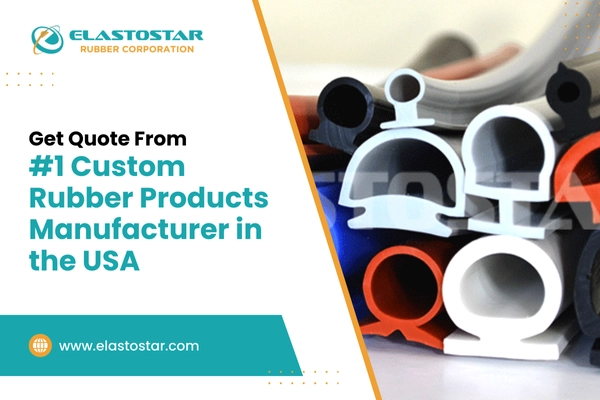Silicone rubber is a popular material used in medical devices, kitchenware, automotive parts, and industrial applications because of its strength, flexibility, and ability to handle high temperatures. However, many people wonder if silicone is harmful or if silicone is toxic.
At Elastostar Rubber Corporation, we produce high-quality, non-toxic silicone products that meet FDA standards and have a UL94V0 rating for fire safety.
In this blog, we will look at the material properties of silicone rubber and explore whether it can become toxic under certain conditions. We will also see why silicone might be harmful in some cases.
What is Silicone Rubber?
Silicone rubber is a synthetic elastomer made of silicon, oxygen, carbon, and hydrogen. It is known for being stretchy, heat-resistant, and durable.
Silicone rubber’s properties include flexibility at extreme temperatures, resistance to UV light, and a wide Shore A hardness range. Its rubber melting point allows it to handle high-temperature applications without degrading.
Read More– Silicone Rubber: Where It Comes From
Common Applications of Silicone Rubber
Silicone rubber’s versatility and resilience make it indispensable across various industries. Its applications range from medical devices and automotive components to construction sealants and kitchen utensils, highlighting its adaptability and reliability.
1. Medical
Silicone tubing manufacturers rely on it for biocompatible and safe products in catheters, implants, and other medical devices.
2 . Food & Beverage
From baking mats to bottle seals, food-grade silicone is heatproof, non-toxic, and safe for repeated use in cooking and food storage.
3. Automotive & Industrial
Widely used in gaskets, hoses, and extruded seals, silicone rubber offers a vulcanisation process, stability and long-lasting performance in harsh environments.
Properties of Silicone Rubber
| Property | Description |
| Composition | Silicon, oxygen, carbon, hydrogen |
| Temperature Resistance | Up to 250°C (482°F) without degradation |
| Shore A Hardness Range | 10 to 80 (depending on application) |
| Rubber Melting Point | Typically around 482°F (250°C) |
| UV Resistance | Excellent resistance to UV light and weathering |
| Flexibility | Maintains flexibility in extreme hot and cold conditions |
| Vulcanisation Stability | Strong cross-linking ensures durability and longevity |
| Common Applications | Medical tubing, gaskets, kitchenware, seals, and insulators |
Is Silicone Rubber Toxic?
No, silicone rubber is generally non-toxic when used correctly. It is safe for medical devices, kitchenware, and industrial applications. However, poor-quality silicone or products containing fillers that are not food-grade certified may pose health risks, especially when exposed to high temperatures or harsh chemicals.
Over time, degraded silicone can release unwanted substances, but high-quality silicone from trusted manufacturers like Elastostar Rubber Corporation remains safe and reliable under normal conditions.
Read More – Is Food Grade Silicone Rubber Really Safe?
When and How Can Silicone Rubber Become Toxic?
Silicone rubber is generally safe, but certain conditions can make it harmful. Here are the factors to be aware of.
1. Low-quality or Non-Food Grade Silicone
Silicone products from low-quality materials may contain fillers or plasticizers that can leach harmful chemicals. This is particularly dangerous in food-grade or medical applications.
Always choose FDA-approved silicone to ensure safety.
2. Exposure to Extreme Temperatures
While silicone is heat-resistant, exceeding its melting temperature of 482°F (250°C) can cause degradation.
Degraded silicone may release harmful substances like siloxanes, which can be hazardous if inhaled or ingested.
For high-temperature applications, use specially formulated silicone that resists breakdown.
3. Physical Degradation Over Time
Continuous exposure to UV radiation, ozone, or mechanical stress can lead to wear and tear.
As silicone degrades, it may release microplastic particles, posing environmental and health risks.
4. Chemical Exposure
Contact with strong acids, solvents, or oils can weaken silicone’s structure, causing it to break down.
Platinum-cured silicone is highly resistant to chemical reactions, making it a safer choice for industrial and medical use.
Health Risks of Silicone Exposure
Silicone rubber is widely considered safe when manufactured to high standards, but low-quality silicone can pose health risks. Understanding these risks is essential to ensure safe use in medical, industrial, and household applications.
- Skin Irritation & Allergies
While rare, skin irritation or allergic reactions can occur when using low-grade silicone products that contain harmful fillers or additives. - Breathing Fumes
Silicone is heat-resistant, but if it is overheated beyond its melting temperature of silicone (482°F/250°C), it can release harmful fumes like formaldehyde. Proper usage within temperature limits prevents this risk.
Debunking Myths About Silicone
- Is Silicone Hazardous?
No, silicone is not hazardous when sourced from reputable manufacturers like Elastostar Rubber Corporation, which produces FDA-approved, high-quality silicone products. - Is Silicone Bad for Rubber?
No, silicone is not harmful to rubber. EPDM silicone blends are commonly used to enhance durability and performance in various industrial applications.
Certified, high-quality silicone products help eliminate health risks and ensure long-term safety and reliability. Elastostar’s silicone products meet the highest industry standards, offering safe solutions for all applications.
How to Use Silicone Products Safely?
Using silicone products safely ensures their long-term durability and prevents potential health risks. Here’s how you can maximize safety.
- Look for Certifications
Always choose FDA-approved silicone products with the UL94 certification for flame resistance and meet medical-grade standards. These certifications ensure the silicone is non-toxic and safe for its intended use. - Proper Usage Tips
Avoid exposing silicone products to temperatures above their melting point (typically 482°F/250°C), as this can cause the material to degrade and release harmful substances. Regularly inspect products for signs of wear, cracks, or discolouration, which may indicate degradation. - Choosing Safe Brands
Trust reputable silicone product manufacturers known for producing non-toxic, long-lasting silicone products that meet the highest industry standards.
By following these safety certifications, you can ensure that your silicone products remain safe, durable, and effective in various applications.
Is Silicone Environmentally Safe?
Silicone is more environmentally friendly than many plastics because it is reusable and long-lasting. Its durability reduces the need for frequent replacements, minimizing waste.
However, silicone is not biodegradable, meaning it doesn’t break down naturally in the environment.
- Recycling and Disposal
Yes, silicone can be recycled, but the facilities that accept silicone products are limited. Specialized recycling processes are required to handle silicone; not all regions can access these facilities. - Microplastics Concern
Over time, degraded silicone can contribute to microplastic pollution. However, high-quality silicone products are designed to resist degradation, reducing the likelihood of contributing to environmental pollution.
Choosing durable and recyclable silicone products helps minimize environmental impact, making them a more sustainable option than single-use plastics.
Elastostar Rubber Corporation’s Commitment to Safety
As a silicone rubber extrusion manufacturers, we prioritize safety and quality in every product we manufacture. Our products meet the UL94V0 rating for flame resistance, ensuring they perform safely even under extreme conditions. We use specialized vulcanizing silicone processes to enhance durability, making our products resistant to wear and degradation.
We use advanced techniques to create products that are both safe and long-lasting. By choosing Elastostar, you invest in high-quality, non-toxic silicone solutions that deliver reliable performance across medical, industrial, and household applications.
Recommended Reads
- Is Food Grade Silicone Rubber Really Safe?
- Benefits of Platinum Cured Silicone Rubber Application
- What Makes Silicone Rubber Popular for Use in the Healthcare Industry?

Conclusion
Due to its strength, flexibility, and heat resistance, silicone rubber is widely used in medical devices, baking equipment, automotive parts, and industrial applications. Generally, high-quality, food-grade and medical-grade silicone is considered non-toxic and safe.
However, low-quality silicone products may contain fillers or additives that can leach harmful chemicals, especially when exposed to high temperatures or harsh conditions. Choosing certified, high-quality silicone products from reputable manufacturers is essential to ensure safety. Proper usage and regular inspection can further minimize potential health risks.
FAQs
- Is silicone harmful?
No, silicone is generally non-toxic and safe when appropriately manufactured. At Elastostar Rubber Corporation, we ensure all our silicone products are made with the highest quality standards to guarantee safety. For more details about our non-toxic silicone solutions, contact our team for personalized assistance. - Can silicone be recycled?
Yes, but recycling facilities for silicone are limited. - Can you heat silicone?
Yes, silicone can withstand high temperatures up to its melting point of 482°F (250°C) without releasing harmful substances. - Does silicone degrade over time?
While silicone is durable, prolonged exposure to extreme conditions can cause physical degradation. - Is silicone toxic?
Silicone is non-toxic under normal use conditions. Only low-quality silicone or improper use can pose risks. Our products at Elastostar are rigorously tested to ensure safety and durability. - Is silicone environmentally safe?
Silicone is reusable and long-lasting, making it safer than plastics but not biodegradable.





